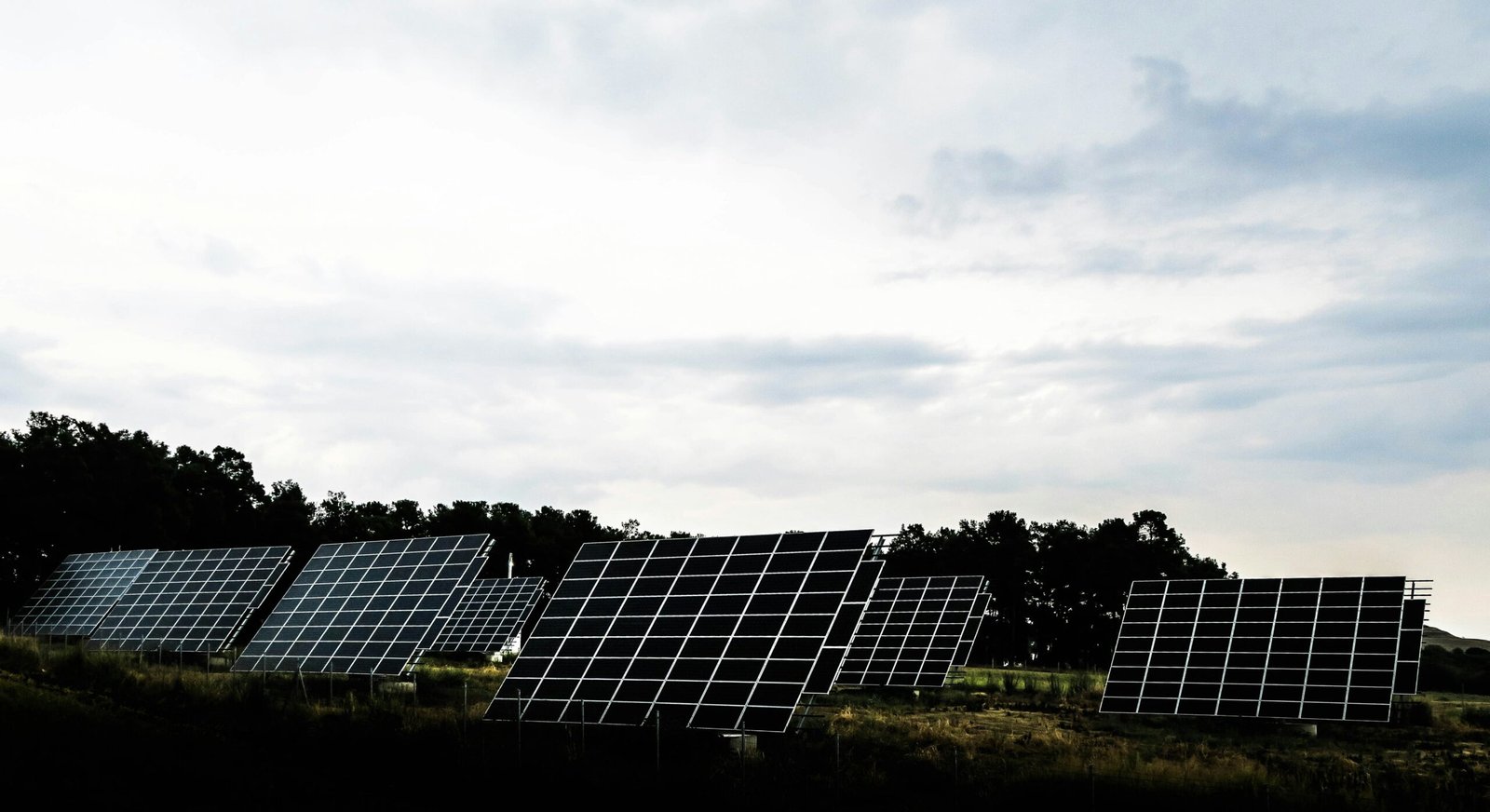Introduction to Solar Panel Cleaning
Maintaining the efficiency of solar panels is crucial in maximizing their energy output and ensuring a return on investment. Solar panels can accumulate dirt, dust, bird droppings, and other debris over time, which can significantly hinder their ability to absorb sunlight and convert it into electricity. Effective cleaning of solar panels thus becomes a pivotal aspect of solar energy maintenance.
Traditional methods of solar panel cleaning typically involve the use of water and detergents. These conventional techniques aim to remove surface contaminants to restore the panels to their optimal operating condition. However, the frequent use of water and chemicals not only raises concerns about resource consumption but also risks causing long-term damage to the panel surfaces and their surroundings if not correctly managed.
This blog post delves into an emerging alternative: waterless solar panel cleaning solutions. Companies like Taypro are leading the shift towards more sustainable cleaning methods. By implementing innovative techniques that eliminate the need for water, these solutions significantly reduce water waste and eliminate the potential environmental impact associated with traditional cleaning agents.
As we explore the evolving landscape of solar panel cleaning, understanding the balance between maintaining panel efficiency and minimizing environmental impact is paramount. Waterless solutions present an opportunity to achieve this balance, showcasing how sustainability and technology can harmonize to support the growing reliance on solar energy. This approach not only conserves precious resources but also aligns with the overarching goal of renewable energy: to be as environmentally friendly as possible.
In the subsequent sections, we’ll examine the various waterless cleaning methods available, compare their effectiveness with traditional practices, and highlight the benefits they offer in terms of both sustainability and solar panel performance. The future of solar panel maintenance may very well lie in these innovative, eco-friendly approaches.
The Environmental Cost of Traditional Cleaning Methods
Cleaning solar panels through traditional methods, such as using water and chemicals, brings substantial environmental costs which often go unnoticed. One significant issue is the enormous volume of water required for the cleaning process. Given that many solar installations are located in arid or semi-arid regions, the usage of water in large quantities stands in stark contrast to sustainable practices aimed at conserving this precious resource. Employing such methods can exacerbate water scarcity issues, undermining the eco-friendly intentions of solar energy adoption.
Additionally, the use of chemicals in conventional solar panel cleaning methods introduces risk of contamination. The runoff water containing these chemicals can seep into the soil, eventually making its way into local water sources such as rivers, lakes, and groundwater reserves. This chemical contamination poses a threat to local ecosystems, potentially harming aquatic life and disrupting the balance of these habitats. Furthermore, the impact on human communities that rely on these water sources cannot be overlooked, as they may face health risks associated with contaminated water supplies.
The overall carbon footprint of traditional solar panel cleaning methods adds another layer of environmental concern. Generating the cleaning agents, transporting water, and deploying cleaning machinery contribute to greenhouse gas emissions, which aggravate the climate crisis. While the energy produced by solar panels aims to reduce carbon emissions, the environmental gains may be partially offset by the emissions associated with their maintenance. Therefore, a more eco-efficient cleaning method could significantly enhance the sustainability profile of solar energy.
It is clear that traditional solar panel cleaning methods carry environmental costs that compromise the very goals they aim to achieve. To maximize the environmental benefits of solar power, it’s crucial to consider waterless solutions, which can help mitigate these issues. Waterless cleaning technologies offer a promising avenue for minimizing the environmental impact of maintaining solar panels, aligning more closely with the principles of sustainability and conservation.
Benefits of Waterless Cleaning Methods
The implementation of waterless cleaning methods for solar panels presents several ecological advantages that align with environmental sustainability goals. One of the most significant benefits is the considerable reduction in water usage. Traditional cleaning practices often require large volumes of water to remove dust, bird droppings, and other debris from solar panel surfaces. Given the increasing global concerns about water scarcity, minimizing water consumption through alternative cleaning methods is highly commendable.
Moreover, waterless cleaning techniques mitigate chemical pollution. Conventional cleaning solutions often involve detergents or other chemical agents which, when rinsed off, can enter local water systems and contribute to environmental contamination. Waterless methods generally rely on mechanical processes such as the use of specialized brushes, air blowers, or electrostatic means to dislodge dirt. These processes eliminate the need for harmful chemicals, thereby preventing them from adversely impacting local ecosystems.
Another ecological advantage of waterless solar panel cleaning techniques is their contribution to the sustainability goals of solar energy systems. Solar energy is advocated as a clean, renewable source of power; however, the environmental benefits can be undermined if the maintenance processes themselves are not environmentally friendly. By integrating waterless cleaning methods, companies like Taypro help ensure that the entire lifecycle of solar energy systems remains eco-friendly, thereby enhancing the overall sustainability of using solar power.
Lastly, waterless cleaning methods often result in better preservation of natural habitats. By avoiding water runoff, which can erode soil and affect nearby flora and fauna, these methods help maintain local biodiversity. This aspect is particularly important in regions harboring sensitive ecosystems that could be devastated by chemical or water-based disruptions.
Technologies and Techniques for Waterless Cleaning
With the increasing emphasis on sustainability and water conservation, waterless solar panel cleaning solutions are gaining traction. Among the leading technologies are electrostatic cleaning, robotic cleaning, and specialized dry-wiping techniques, each offering distinct advantages for maintaining solar panel efficiency while reducing environmental impact.
Electrostatic cleaning operates on the principle of using static electricity to remove dust and debris from solar panel surfaces. In this method, an electrostatic charge is applied to the back of the panel, attracting the dust particles away from the surface and thereby cleaning it without the need for water. This technique is particularly effective in arid regions where water is scarce.
Robotic cleaning represents another innovative approach to maintaining solar panel efficiency. Advanced robotics, equipped with sensors and brushes, can traverse the surface of the panels to systematically remove contaminants. These robots can operate autonomously or be controlled remotely, providing a thorough cleaning solution without the need for manual labor or water. Taypro and other companies are at the forefront of developing such robotic systems that offer high precision and operational efficiency.
Additionally, special dry-wiping techniques also come into play. With these, microfiber cloths or other specialized materials are used to wipe down the panels, effectively removing dust and grime without scratching the surface. The gentle nature of microfiber ensures that panels remain undamaged while enhancing the longevity and performance of the solar array.
All these waterless technologies and techniques not only help in reducing water usage but also play a significant role in minimizing the environmental impact of solar panel maintenance operations. As the industry continues to evolve, it is imperative to adopt such innovative and sustainable cleaning practices to maintain the efficiency and effectiveness of solar energy systems.
Water Conservation and Its Global Importance
Water conservation has become one of the most pressing environmental issues of our time. As global populations swell and climate change reshapes ecosystems, water scarcity is looming large on the horizon. In this context, the efficient use of water resources is not just a regional concern but an international imperative. Every drop saved plays a crucial role in ensuring that future generations have access to clean, drinkable water.
Solar panel cleaning practices have traditionally relied heavily on water. Given that solar panels often need regular maintenance to function at optimal efficiency, this can result in significant water consumption over time. Amid increasing awareness of environmental sustainability, the industry has been motivated to explore water-saving alternatives. One such innovation comes from Taypro, which has championed waterless cleaning solutions, thereby contributing to broader conservation efforts.
Implementing waterless solutions is a meaningful step toward reducing water waste within the solar industry. It not only aligns with the global trend of seeking eco-friendly alternatives but also underscores the broader implications of water conservation. Think, for example, of regions that are already struggling with water shortages. The application of water-intensive cleaning methods for solar panels in these areas would be both impractical and environmentally detrimental.
Beyond the solar industry, the call for sustainable water practices resonates across multiple sectors. Agriculture, manufacturing, and even household consumption are areas where optimizing water usage can lead to considerable environmental benefits. Therefore, adopting waterless cleaning methods for solar panels sends a powerful message: sustainable practices are achievable and beneficial. It illustrates how industries can innovate to meet their operational needs while respecting and preserving the natural resources upon which they depend.
In the quest for sustainability, refining everyday practices proves pivotal. By reducing reliance on water, companies like Taypro not only conserve a precious resource but also set a standard for responsible industry behavior. Through such initiatives, we pave the way for a future where environmental conservation is a foundational aspect of technological and industrial advancement.
Reducing Chemical Usage in Maintenance
In the maintenance of solar panels, traditional cleaning methods frequently involve the application of harsh chemicals. These substances, while effective in removing grime and debris, carry a significant environmental footprint. The runoff from chemical-laden cleaning solutions can seep into nearby soil and water sources, disrupting ecosystems and posing risks to wildlife. Additionally, the production and disposal of these chemicals contribute to pollution and resource depletion.
Reducing chemical usage in the maintenance of solar panels is essential for the health of ecosystems and communities. By transitioning to more eco-friendly and sustainable methods, such as waterless cleaning techniques, the negative environmental impacts can be significantly mitigated. Taypro, a leader in solar panel cleaning solutions, emphasizes the importance of such methodologies. Their approach abides by environmentally conscious practices, ensuring that the maintenance process does not harm the surrounding habitats.
Waterless cleaning methods not only prevent the introduction of harmful chemicals into the environment but also reduce water consumption, a critical consideration in arid regions. By employing mechanical or non-toxic alternatives, these methods maintain the efficiency and longevity of solar panels without compromising ecological integrity. The innovation in Taypro’s techniques exemplifies their commitment to sustainability, providing a model for the industry to follow.
Furthermore, reducing the use of chemicals in solar panel maintenance can lead to healthier communities. Minimizing chemical exposure protects human health, particularly in areas where residents may come into contact with contaminated runoff. Adopting greener maintenance practices thus presents a two-fold benefit: safeguarding the environment and promoting public health.
In conclusion, embracing eco-friendly cleaning solutions, as demonstrated by Taypro, marks a crucial step toward responsible solar panel maintenance. By reducing chemical usage, we can ensure that the pursuit of renewable energy does not inadvertently harm the very ecosystems and communities it seeks to benefit.
Future Directions and Innovations
The field of solar panel cleaning is constantly evolving, with ongoing research and development aimed at enhancing efficiency while minimizing environmental impact. One significant advancement on the horizon is the use of robotic cleaning systems. These automated solutions are designed to perform regular maintenance without human intervention, significantly reducing the physical resources needed for cleaning operations. Such technology not only promotes precision in cleaning but also decreases the dependency on water and harmful chemicals.
Another emerging trend is the development of advanced coatings for solar panels. These hydrophobic and self-cleaning coatings can repel dust, dirt, and other particulate matter, thereby reducing the frequency of necessary cleanings. As these technologies become more refined, the need for manual and frequent cleaning will diminish, leading to lower operational costs and less environmental strain.
Waterless cleaning methods, such as the use of pressurized air and electrostatic techniques, are also gaining traction as viable alternatives. These methods are particularly relevant in arid regions where water conservation is a critical concern. Companies like Taypro are at the forefront, innovating and refining these techniques to ensure they meet industry standards while remaining eco-friendly. By adopting these waterless solutions, the solar industry can significantly reduce its water footprint, an essential factor in promoting sustainability.
Furthermore, continued exploration into plant-based cleaning agents offers a promising avenue for reducing chemical usage. These biodegradable and non-toxic solutions provide an effective means of maintaining panel efficiency without compromising the surrounding ecosystem. As research in this area progresses, it holds the potential to replace traditional, harsher chemicals with greener alternatives.
The push towards smarter, more sustainable solar panel cleaning practices is well underway. By fostering innovation and investing in research, companies and industries can significantly mitigate the negative environmental impacts associated with traditional cleaning methods. Adopting these advanced technologies and solutions will be critical for meeting the future demands of renewable energy as it continues to scale globally.




